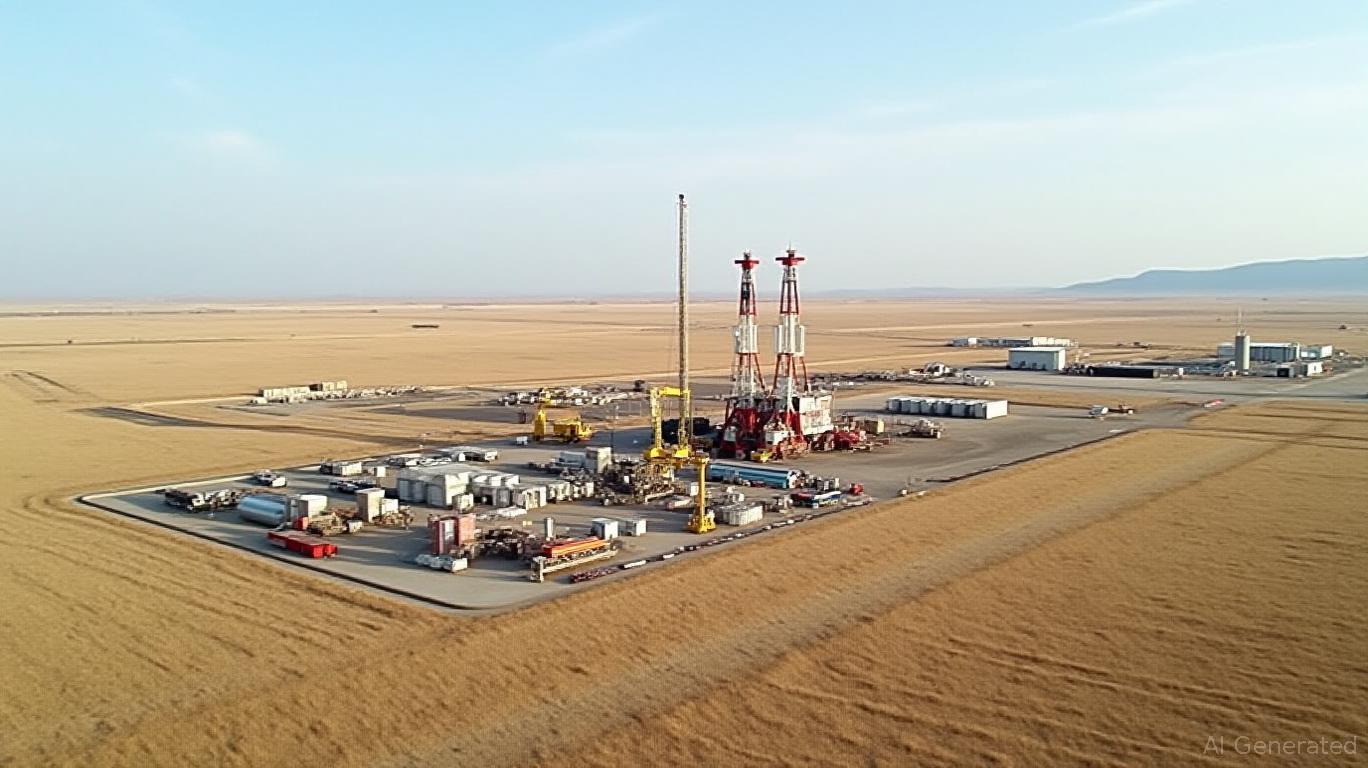Prairie Operating (PROP) Plummets 17%—Is This a Bottom or a Warning?

Prairie Operating Co. (NASDAQ:PROP) has been a poster child for energy sector volatility this year, with its stock plunging 17% in the week ending June 20, 2025. While the decline has created a short-term oversold scenario, the company's long-term risks—from regulatory pressures to leadership credibility—remain unresolved. This article dissects whether the drop presents a buying opportunity or a cautionary signal for investors.
The Immediate Catalysts: Debt, Dilution, and Downgrades
The recent selloff is rooted in three interlinked factors: equity dilution, debt concerns, and earnings downgrades.
Equity Dilution: In early 2025, Prairie raised $600 million to acquire Bayswater's DJ Basin assets and secured a $1 billion credit facility. While this expanded its production capacity to 26,000 BOE/d, the equity issuance diluted existing shareholders, reducing their stake and pressuring the stock.
Debt Burden: The $1 billion credit facility increased leverage, raising red flags about Prairie's ability to service debt during oil price downturns. shows a sharp rise post-2024, now exceeding 2.0x—a level some analysts view as risky.
Earnings Downgrades: Analysts slashed 2025 EPS forecasts by 20% over 30 days, citing execution risks in integrating the Bayswater assets and rising shale production costs. The stock now trades at a forward price-to-sales ratio of 0.32, far below sector averages.
Technical Analysis: Oversold or a Downtrend?
Technicals suggest the stock may be near a short-term bottom, but momentum remains bearish.
Price Action: The stock closed at $3.97 on June 18, up 1.02% from the prior day but down 2.85% over the past 10 days. reveals a 43% year-to-date decline, with resistance at $4.28 and support at $3.51.
Moving Averages: The 20-day SMA is below the 60-day SMA, signaling a bearish mid-term trend. However, the recent bounce from $3.69 (May 27 low) hints at potential oversold conditions.
Volume: Trading volume fell 5,050 shares on June 18, but insider buying—such as Director Jonathan Gray's $493,000 purchase in May—suggests confidence in the stock's value.
Long-Term Risks: Policy Shifts and Leadership Credibility
While the short-term pain is clear, the long-term outlook hinges on two critical factors: regulatory risks and leadership execution.
- Policy and Regulatory Pressures:
- The DJ Basin faces tightening environmental regulations, including potential permitting delays and stricter emissions controls. While Prairie's Genesis Development Plan (approved in 2024) aims to boost production, delays or cost overruns could derail cash flow.
The Biden administration's push for renewable energy and carbon pricing could indirectly pressure oil-focused firms like Prairie.
Leadership and Capital Allocation:
- Insider Sentiment: Insiders sold $200,000 in shares in June 2024 but turned buyers in 2025. This flip-flop raises questions about leadership's long-term vision and whether the Bayswater acquisition is truly accretive.
- Debt Management: The $300–$320 million 2025 capex plan relies on oil prices staying above $60/bbl (the hedge price). A sustained drop below this threshold could strain liquidity.
Investment Thesis: Buy the Dip, or Wait for Clarity?
Bull Case:
- The stock's 327.6% EPS growth forecast to $4.78 in 2025 (post-acquisition) suggests a valuation reset is possible.
- A Zacks Rank #1 (“Strong Buy”) and short-covering opportunities (short sale ratio at 26.77%) hint at a potential rebound.
Bear Case:
- Overleveraged balance sheet and execution risks in integrating Bayswater's assets could prolong the pain.
- The energy sector's 5.5% decline this year (with
Conclusion: A High-Risk, High-Reward Gamble
Prairie Operating's 17% decline creates a short-term oversold opportunity, supported by insider buying and a $3.51 technical floor. However, investors must weigh this against long-term risks: regulatory hurdles, debt sustainability, and leadership consistency.
Actionable Advice:
- Aggressive Investors: Consider a small position at $3.50–$3.60, with a stop-loss below $3.20. Target $4.28 (near-term resistance) or $5.00 (if earnings beat estimates).
- Conservative Investors: Wait for a Q2 earnings beat or a sustained breakout above $4.47 before entering.
In sum,
is a rollercoaster play for energy bulls—rewarding those who bet on its growth story surviving the current storm. For others, the risks remain too great.
Comments
No comments yet